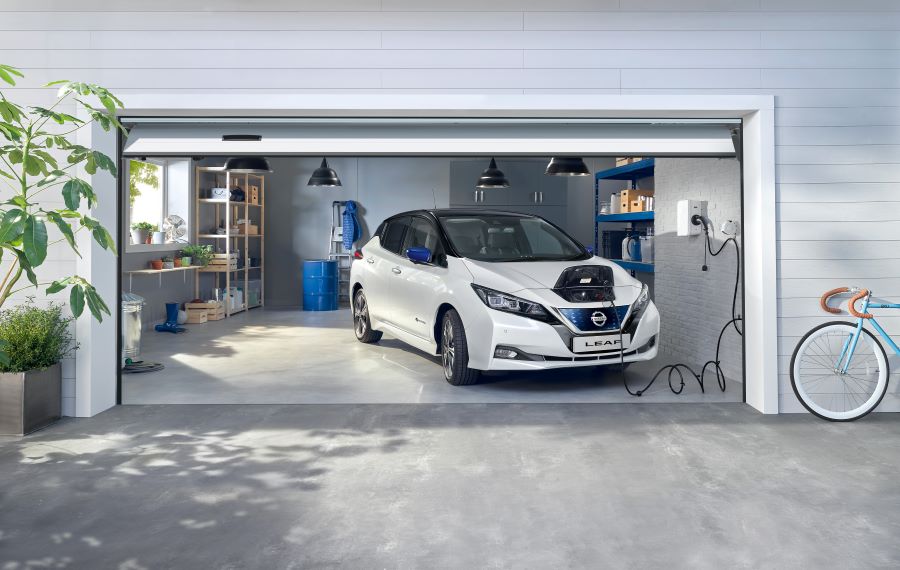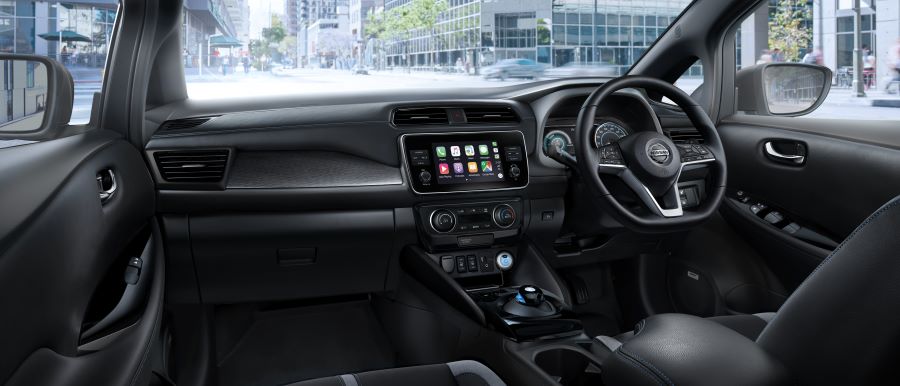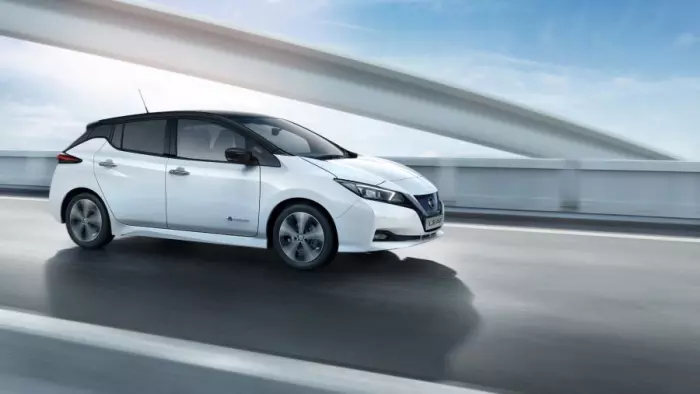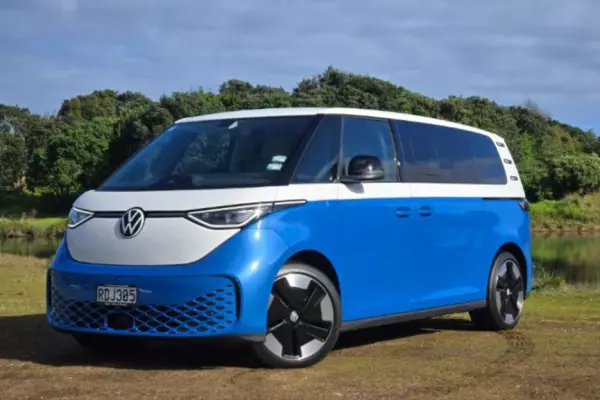This car is such a hot property that there’s not even a demo vehicle set aside for the media to test-drive. The fleet buyers are so desperate to get their hands on the Leaf that I had to patiently wait in a queue behind people wanting to give Nissan actual money.
To many, the Leaf’s reputation precedes it as the car of the eco-warrior early adopters, back when electric cars were slow, safe, boring and generally unappealing. Pre-Tesla.
The last time I drove one (some years back), I ended up spending 45 minutes in a suburban shopping-mall car park with whining kids in the back waiting to charge it enough to get back to our friends’ house. I was a little unimpressed.
 The Nissan Leaf on charge.
The Nissan Leaf on charge.
But Nissan has learnt a lot since then and this car is a well-rounded piece of engineering.
In fact, I am surprised by how far it has come and how much I like it.
Firstly, it does not suffer from the aggressive regenerative braking of the Mini Electric, its nearest competition.
It effectively offers three modes for sucking mileage back into the gauge:
• Eco Mode: This evens everything out, neutering acceleration and encouraging frugality.
• E-Drive: This turns on moderate regenerative braking. I used it on a long trip with Eco Mode and it worked quite nicely. Not too aggressive.
• B: This is a gear setting and turns the Leaf into a single-pedal car. Push down to move; lift your foot off to brake.
With all of these modes turned off, the Leaf is decidedly sporty. Maybe too so. Its instant acceleration is great in a sports car, but I can imagine tanking the Leaf on a corner if you get too cocky. It’s great in a straight line, but it was not built to take a hairpin at the speed limit.
At least, that’s how I feel. The tech specs tell a different story. Nissan has introduced “individual wheel braking” to hug the road like never before. Maybe I just didn’t push the car hard enough.
Its interior is classy, without being expensive. The finishes match a $60,000 car and everything is thoughtful and intelligent.
 The Leaf's interior gives good bang for your buck.
The Leaf's interior gives good bang for your buck.
The base model has a 40kWh battery and range of 270km, which feels achievable. It will give you 110kw of power and the surprising acceleration allowed for by 320Nm of torque.
With a 62kWh battery, the range is well above 300km, unless you drive State Highway 16 like some kind of speed freak (guilty). This is the model I drove, but it is not actively sold in New Zealand yet.
I was confused by the climate control stripping about 7% off the available range when turned on. Air conditioning I can understand, but why would the heater take much power? It is just diverting heat from the motor to warm the car. Tick. Tick. Tick. Oh, of course: the motor doesn’t generate heat because it doesn’t have a massive series of tiny petrol explosions. Me not think so good.
The Leaf retails at $61,990 (plus on-road costs), but you can then get the government subsidy, which reduces the cost by $8625.
It is worth the extra money over the MG ZS EV, but the price is scarily close (for Nissan) to the new pricing for a Tesla Model 3, at $66,990 before the subsidy.
My overall impression is the Leaf is a seriously good EV in which the technology works with you, rather than against. Having come out of the Mini Electric, of which I am not a fan, the Leaf is a pleasant surprise.













